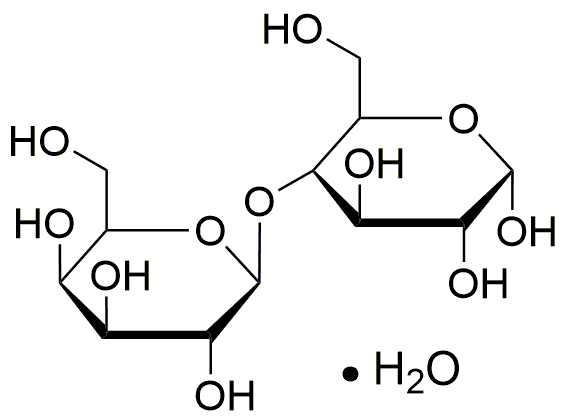a-D-Lactose monohydrate is widely utilized in research focused on:
- Pharmaceuticals: It serves as a filler and stabilizer in tablet formulations, enhancing the delivery of active ingredients while improving the overall texture and taste of medications.
- Food Industry: Commonly used as a sweetener and bulking agent in dairy products and infant formulas, it provides a natural source of energy and helps in maintaining product consistency.
- Cosmetics: Incorporated into skincare products for its moisturizing properties, it helps improve skin hydration and texture, making it a popular choice in creams and lotions.
- Biotechnology: Utilized in cell culture media to support the growth of various cell types, aiding researchers in studying cellular processes and developing biopharmaceuticals.
- Research Applications: Employed as a standard in analytical chemistry for lactose quantification, assisting scientists in various studies related to carbohydrate metabolism and dairy science.
General Information
Properties
Safety and Regulations
Applications
a-D-Lactose monohydrate is widely utilized in research focused on:
- Pharmaceuticals: It serves as a filler and stabilizer in tablet formulations, enhancing the delivery of active ingredients while improving the overall texture and taste of medications.
- Food Industry: Commonly used as a sweetener and bulking agent in dairy products and infant formulas, it provides a natural source of energy and helps in maintaining product consistency.
- Cosmetics: Incorporated into skincare products for its moisturizing properties, it helps improve skin hydration and texture, making it a popular choice in creams and lotions.
- Biotechnology: Utilized in cell culture media to support the growth of various cell types, aiding researchers in studying cellular processes and developing biopharmaceuticals.
- Research Applications: Employed as a standard in analytical chemistry for lactose quantification, assisting scientists in various studies related to carbohydrate metabolism and dairy science.
Documents
Safety Data Sheets (SDS)
The SDS provides comprehensive safety information on handling, storage, and disposal of the product.
Product Specification (PS)
The PS provides a comprehensive breakdown of the product’s properties, including chemical composition, physical state, purity, and storage requirements. It also details acceptable quality ranges and the product's intended applications.
Certificates of Analysis (COA)
Search for Certificates of Analysis (COA) by entering the products Lot Number. Lot and Batch Numbers can be found on a product’s label following the words ‘Lot’ or ‘Batch’.
*Catalog Number
*Lot Number
Certificates Of Origin (COO)
This COO confirms the country where the product was manufactured, and also details the materials and components used in it and whether it is derived from natural, synthetic, or other specific sources. This certificate may be required for customs, trade, and regulatory compliance.
*Catalog Number
*Lot Number
Safety Data Sheets (SDS)
The SDS provides comprehensive safety information on handling, storage, and disposal of the product.
DownloadProduct Specification (PS)
The PS provides a comprehensive breakdown of the product’s properties, including chemical composition, physical state, purity, and storage requirements. It also details acceptable quality ranges and the product's intended applications.
DownloadCertificates of Analysis (COA)
Search for Certificates of Analysis (COA) by entering the products Lot Number. Lot and Batch Numbers can be found on a product’s label following the words ‘Lot’ or ‘Batch’.
*Catalog Number
*Lot Number
Certificates Of Origin (COO)
This COO confirms the country where the product was manufactured, and also details the materials and components used in it and whether it is derived from natural, synthetic, or other specific sources. This certificate may be required for customs, trade, and regulatory compliance.


